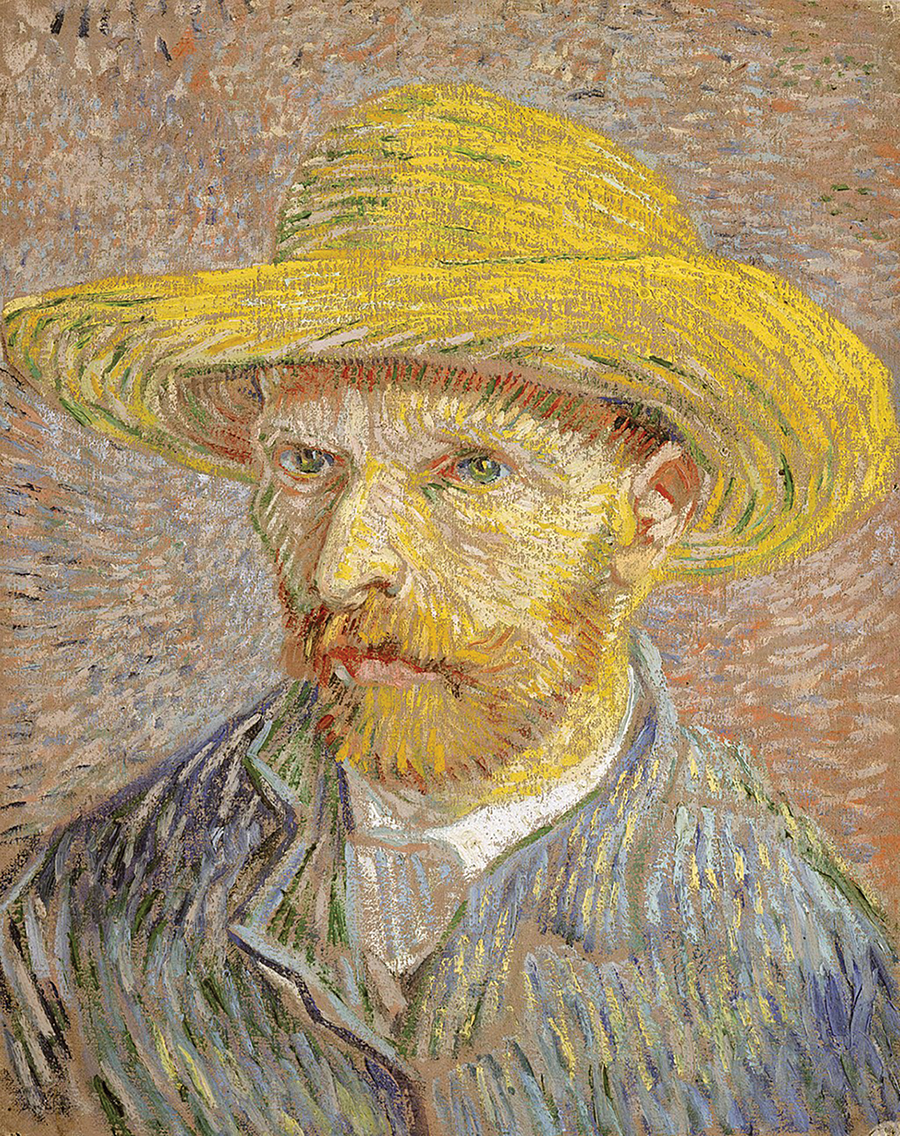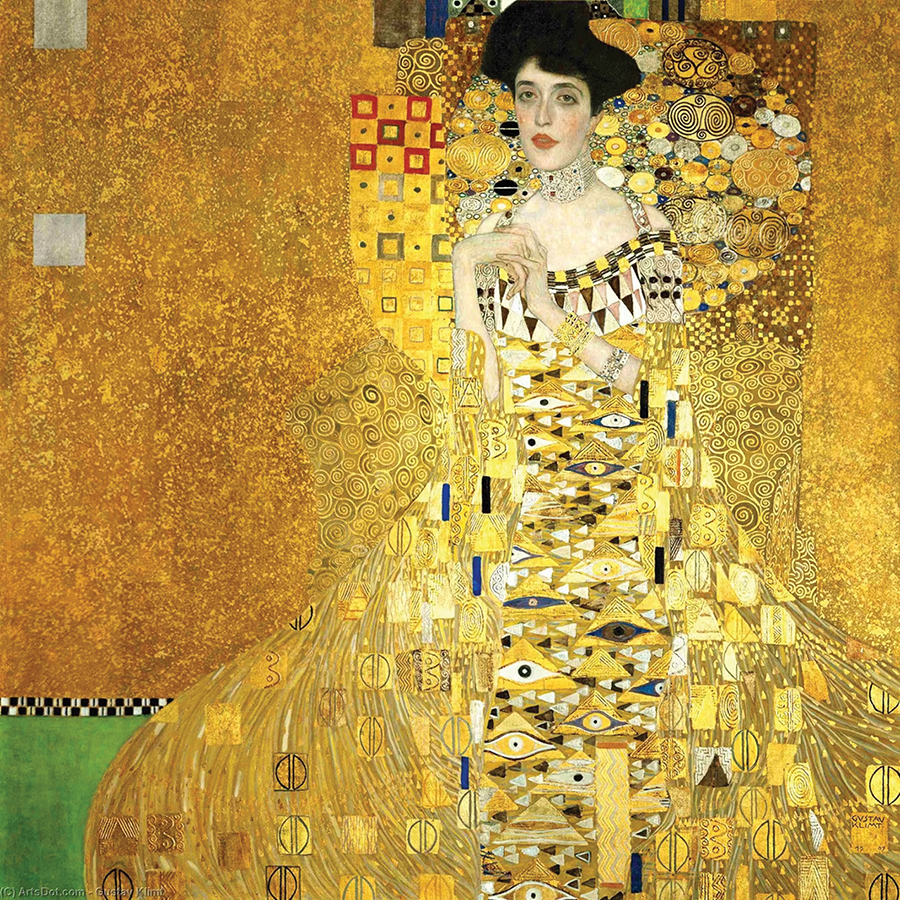Life Imitates Art

And vice versa
By Cassie Bustamante
Photography by Bert VanderVeen
Costuming by Mary McKeithen of Showboat in Southern Pines
Makeup and Hairstyling by Local Honey Salon
“The reason some portraits don’t look true to life,” says Spanish Surrealist artist Salvador Dalí, “is that some people make no effort to resemble their pictures.” Touché, sir.
We scoured the city and found local lookalikes to subjects in famous paintings, and, with a little “effort to resemble,” plus makeup and hair artistry from Local Honey Salon, we’ve recreated those portraits. From Frida to Vincent, six Gate City doppelgängers are walking works of art. Who knows? Next time you’re sipping your cold brew at a local corner café, you may find yourself in a booth next to someone who could be Mona Lisa’s twin — but a whole lot younger — if only she made the effort.
Self-Portrait with a Straw Hat
by Vincent Van Gogh, 1887


Dutch post-impressionistic painter Vincent Van Gogh painted roughly 2,100 works of art in just a decade’s time, but he’s regrettably better known by some for cutting off his ear. In 1890, Van Gogh took his own life after struggling with mental illness. He once said, “If I am worth anything later, I am worth something now. For wheat is wheat, even if people think it is a grass in the beginning.” Today, he’s one of the most celebrated and imitated artists in the world, and his work is worth more than he ever could have dreamed. We’ve recruited the Weatherspoon Art Museum’s two-eared head of communications, Loring Mortenson, to fill Van Gogh’s shoes — and hat — with a little impressionistic artistry from both costumer Mary McEithen and the team at Local Honey.
Portrait of Adele Bloch-Bauer I
by Gustav Klimt, 1907


The only subject that Klimt painted twice was Adele Bloch-Bauer, a Jewish Viennese socialite and patron of the arts whose husband, Ferdinand Bloch-Bauer, a Jewish banker and sugar producer, commissioned the artist to create the painting as a gift for Adele’s parents. It’s rumored that Adele became Klimt’s mistress. With a little Midas touch and what Local Honey owner Jay Bulluck calls an “ice cream cone” updo, sustainable fashion lead and GreenHill board member Swati Argade steps into the role of our Adele.
Two Fridas
by Frida Kahlo, 1939


Mexican artist Frida Kahlo was always interested in art from an early age, but it wasn’t until a bus accident derailed her med school path that she decided to pursue it as a career. Kahlo, who was known for her introspective self-portraits and feminism, once said, “Take a lover who looks at you like maybe you are a bourbon biscuit.” Regrettably, her husband, renowned Mexican muralist Diego Rivera, often served his craving for biscuits elsewhere. Their tumultuous marriage ended in 1939 and this painting, she later admitted, reflects the loneliness she felt in her separation from him. You’re not seeing double. Isabella Bueno, a mother of three little ones who is studying to be a Realtor, is seen here twice — quintessential unibrow added, of course — once in a more traditional Mexican costume on the left, and in more contemporary dress on the right.
Lady Agnew of Lochnaw
by John Singer Sargent, 1892


Born into an old Scottish family, Gertrude Agnew was wife to British Sir Andrew Noel Agnew, Ninth Baronet. A socialite who often entertained by throwing lavish garden parties at Lochnaw Castle, just months into her marriage, Lady Agnew contracted influenza and spent much of their first matrimonial year — the same year this portrait was commissioned and completed — in periods of convalesce. So, while it looks as though American expatriate Singer Sargent captured her in slightly amused repose, there’s a good chance she was just taking a much needed breather. Greensboro textile artist, instructor and clothing designer Ann Tilley lounges in luxury as Lady Agnew. We don’t know about you, but we’re seeing double.
Self Portrait
by Henri Matisse, 1918


Nearing the age of 50, French visual artist Henri Matisse created this self portrait during what is commonly referred to as his “return to order,” a pulling back that was also seen in other artists of the post-World-War-I era, including Picasso and Stravinsky. A Matisse sculpture, Madeleine I (1901), can be found at the Weatherspoon Art Museum in a collection donated by Claribel and Etta Cone, sisters to Moses and Ceasar Cone. Matisse, who was a friend to the Cone sisters, once said, “It has bothered me all my life that I do not paint like everybody else.” We say, thank goodness he didn’t. Our own contributing editor, David Claude Bailey, already possessing the glasses and beard — which Bullock treated to “the best beard cut I’ve ever had” — dons the garb and becomes our Henri.
Birth of Venus
by Sandro Botticelli, circa 1485


Early-Renaissance painter Sandro Botticelli spent his entire life in Italy, mostly in the same neighborhood in Florence. However, he did spend time in Pisa and Rome, where he frescoed a wall of the Sistine Chapel. The subjects of his art were often mythological or religious figures, but Roman goddess Venus shows up most frequently in his work — here, and in Primavera and Venus and Mars. Botticelli never married, but there is some speculation that he was at least platonically in love with Simonetta Vespucci, who sat as model for many of his paintings, including this one. Upon his death in 1510, his remains were placed next to hers, per his request. Our Venus is photographer Lauren Quinn, who often studies the female figure in her own work.
